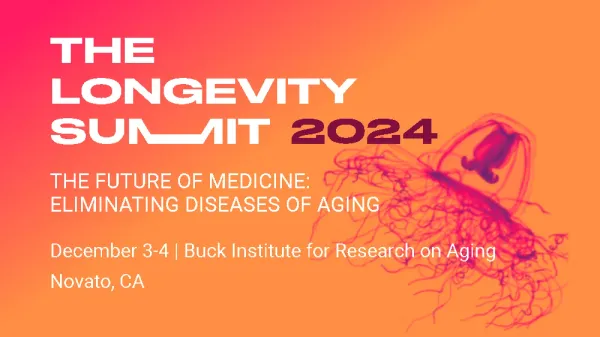CRISPR and Aging: Can Gene Editing Extend Lifespan?
Learn how CRISPR gene editing could combat aging by targeting key genetic factors like telomere shortening, DNA damage, and mitochondrial dysfunction, potentially extending healthy lifespan.

Aging is an inevitable biological process, yet the dream of slowing or reversing it has fascinated humans for centuries. In recent years, the advent of groundbreaking technologies like CRISPR (Clustered Regularly Interspaced Short Palindromic Repeats) has ushered in a new era of genetic editing that could transform how we understand and manage aging. Could this powerful tool potentially halt or even reverse the signs of aging, making humans live longer and healthier lives as well?
What is CRISPR?
CRISPR is a revolutionary gene-editing technology that allows scientists to precisely alter DNA sequences. It operates like molecular scissors, cutting DNA at specific locations and enabling gene addition, deletion, or modification. Originally discovered as a defense mechanism used by bacteria to fight viruses, CRISPR was adapted by scientists to create targeted changes in the genomes of any organism, including humans.
The CRISPR-Cas9 system, the most widely used version of the technology, employs an enzyme called Cas9, guided by a sequence of RNA, to locate the target DNA and make cuts. Once the DNA is severed, natural cellular repair mechanisms take over, which can be harnessed to introduce new genetic material or fix faulty genes.
The Science of Aging
Aging is characterized by the gradual decline of physiological functions, increased susceptibility to disease, and eventual death. At the cellular level, aging is influenced by several factors, including:
- Telomere Shortening: Telomeres, the protective caps at the ends of chromosomes, shorten each time a cell divides. Eventually, when telomeres become too short, cells lose the ability to divide, leading to cellular aging and death.

- DNA Damage: Over time, DNA accumulates damage due to environmental factors, radiation, and normal metabolic processes. This damage can lead to mutations, dysfunctional cells, and age-related diseases.
- Mitochondrial Dysfunction: Mitochondria, the powerhouses of the cell, produce energy but also generate harmful byproducts like free radicals. As we age, mitochondrial function declines, contributing to cellular damage and aging.
- Epigenetic Changes: Epigenetic modifications—changes in gene expression that don’t involve altering the DNA sequence—accumulate with age, leading to a decline in cellular function and the activation of genes that promote aging.
- Senescence: As cells age, they enter a state of senescence, where they stop dividing but do not die. Senescent cells release inflammatory factors, contributing to tissue damage and age-related diseases.
How CRISPR Can Address Aging Mechanisms
While aging cannot be entirely stopped, CRISPR offers a tantalizing possibility to target and modify specific genes or cellular processes that contribute to the aging process. Here’s how CRISPR could potentially play a role in combating aging:
Telomere Lengthening
One of the key markers of aging is the shortening of telomeres, the protective caps at the ends of chromosomes. As cells divide, telomeres become progressively shorter, eventually leading to cellular senescence and dysfunction. Research has shown that artificially lengthening telomeres can extend the lifespan of cells.
Using CRISPR, scientists can theoretically activate the TERT gene, which encodes telomerase, the enzyme responsible for maintaining telomere length. In experiments with mice, reactivating telomerase has reversed some aspects of aging and extended lifespan. While the application of CRISPR for telomere lengthening in humans is still in its infancy, it holds the potential to slow down cellular aging significantly.

Repairing DNA Damage
As we age, DNA accumulates damage due to environmental stressors and errors during replication. This leads to mutations, cancer, and other age-related diseases. CRISPR could be used to repair or replace damaged DNA sequences, reducing the accumulation of mutations over time.
One of the most promising applications of CRISPR is in the treatment of genetic disorders, such as those caused by single-gene mutations. For example, diseases like progeria, which causes accelerated aging, are caused by mutations in the LMNA gene. CRISPR could be used to correct such mutations, potentially extending the lifespan of individuals with these conditions and offering insights into how DNA damage drives aging in the general population.
Reversing Cellular Senescence
Senescent cells accumulate with age, contributing to inflammation and tissue dysfunction. These cells release harmful substances that damage surrounding cells, promoting aging and age-related diseases. CRISPR offers the possibility to selectively target and remove senescent cells, potentially reversing some aspects of aging.
Researchers used CRISPR to selectively remove senescent cells in mice in a study. The results were promising: treated mice had improved health and extended lifespan. By using CRISPR to clear out senescent cells in humans, we could potentially prevent or reverse age-related diseases like arthritis, diabetes, and neurodegenerative disorders.
Enhancing Mitochondrial Function
Mitochondria are critical for energy production, but they also generate free radicals that can damage cells and contribute to aging. Mitochondrial dysfunction is a hallmark of aging and is implicated in diseases like Alzheimer's, Parkinson's, and cardiovascular disease.
CRISPR could be used to target genes involved in mitochondrial biogenesis or to repair mutations in mitochondrial DNA. By enhancing mitochondrial function, CRISPR could reduce oxidative stress and improve cellular energy production, potentially extending lifespan.
Reversing Epigenetic Changes
Epigenetic changes accumulate over time, affecting gene expression and contributing to aging. For example, genes that promote inflammation or cellular senescence may become more active with age, while genes involved in cellular repair may become less active.
CRISPR can be used to modify epigenetic markers, effectively resetting the aging clock for certain genes. This could potentially allow cells to function more like their younger counterparts. Research in this area is still emerging, but early studies have shown that manipulating epigenetic markers can extend the lifespan of cells and improve tissue function in animals.
CRISPR and Age-Related Diseases
While the ultimate goal of using CRISPR in aging research is to extend the healthy human lifespan, much of the current focus is on using CRISPR to treat age-related diseases. These diseases, such as cancer, cardiovascular disease, and neurodegenerative disorders, are the leading causes of death in older adults. By targeting the genetic and cellular mechanisms that drive these diseases, CRISPR could significantly improve quality of life and extend healthy years.
Cancer
Cancer is one of the primary age-related diseases. As we age, the risk of accumulating mutations in DNA increases, leading to the development of cancerous cells. CRISPR has already been used in clinical trials to edit immune cells (CAR-T cells) that can effectively target and destroy cancer cells. Future applications could involve editing the genes responsible for cancer predisposition or correcting the mutations that lead to the uncontrolled growth of cancer cells.
Neurodegenerative Diseases
Alzheimer’s disease, Parkinson’s disease, and other neurodegenerative disorders are deeply tied to aging. CRISPR could be used to target the specific genetic mutations associated with these conditions, preventing their onset or halting their progression. Early studies have shown that CRISPR can be used to reduce the production of amyloid plaques in the brains of mice, a hallmark of Alzheimer’s disease.
Ethical Considerations of Using CRISPR for Aging
While the potential of CRISPR to extend lifespan and reverse aspects of aging is undeniably exciting, it also raises a host of ethical concerns. One of the primary issues is the distinction between therapeutic and enhancement uses of CRISPR. While using CRISPR to treat diseases like cancer or progeria might be universally accepted, altering genes to extend life expectancy or enhance physical or cognitive abilities could lead to societal inequalities or unintended consequences.
There’s also the question of long-term safety. CRISPR is still a relatively new technology, and while it has shown promise in lab settings, its long-term effects on human health are unknown. Off-target effects, where CRISPR unintentionally alters the wrong section of DNA, could lead to unforeseen health problems. As CRISPR moves from the lab to human trials, rigorous safety protocols will need to be in place to ensure that it does more good than harm.
The Future of CRISPR and Aging
CRISPR represents one of the most powerful tools in modern biology, offering the potential to edit the fundamental building blocks of life. As researchers continue to explore the genetic mechanisms behind aging, CRISPR could play a pivotal role in developing therapies that extend the human lifespan and improve the quality of life in old age.
While we are still in the early stages of applying CRISPR to aging, the possibilities are vast. By targeting the underlying causes of aging at the genetic and cellular levels, we could someday delay or even reverse the aging process. However, as with all new technologies, the road ahead is fraught with challenges, and careful consideration will need to be given to both the scientific and ethical implications of using CRISPR to manipulate the aging process.
In conclusion, CRISPR holds incredible potential for extending human lifespan by addressing the root causes of aging at the genetic level. However, the technology is still in its early days, and much research is needed before it can be safely applied to humans. If the hurdles of safety and ethics can be overcome, we may one day live in a world where aging is not an inevitability but a condition that can be treated and potentially reversed.
Sources
- CRISPR/Cas9 therapy can suppress aging, enhance health and extend life span in mice
https://www.sciencedaily.com/releases/2019/02/190219111747.htm - Jacinto FV, Link W, Ferreira BI. CRISPR/Cas9-mediated genome editing: From basic research to translational medicine. J Cell Mol Med. 2020 Apr;24(7):3766-3778. doi: 10.1111/jcmm.14916. Epub 2020 Feb 25. PMID: 32096600; PMCID: PMC7171402.
- Yuan, X., Larsson, C., & Xu, D. (2019). Mechanisms underlying the activation of TERT transcription and telomerase activity in human cancer: Old actors and new players. Oncogene, 38(34), 6172-6183. https://doi.org/10.1038/s41388-019-0872-9
- Xue C, Greene EC. DNA Repair Pathway Choices in CRISPR-Cas9-Mediated Genome Editing. Trends Genet. 2021 Jul;37(7):639-656. doi: 10.1016/j.tig.2021.02.008. Epub 2021 Apr 22. PMID: 33896583; PMCID: PMC8187289.
- Liu X, Wei L, Dong Q, Liu L, Zhang MQ, Xie Z, Wang X. A large-scale CRISPR screen and identification of essential genes in cellular senescence bypass. Aging (Albany NY). 2019 Jun 20;11(12):4011-4031. doi: 10.18632/aging.102034. PMID: 31219803; PMCID: PMC6628988.
- Jo, Areum, Ham, Sangwoo, Lee, Gum Hwa, Lee, Yun-Il, Kim, SangSeong, Lee, Yun-Song, Shin, Joo-Ho, Lee, Yunjong, Efficient Mitochondrial Genome Editing by CRISPR/Cas9, BioMed Research International, 2015, 305716, 10 pages, 2015. https://doi.org/10.1155/2015/305716
- Wang, K., Liu, H., Hu, Q., Wang, L., Liu, J., Zheng, Z., Zhang, W., Ren, J., Zhu, F., & Liu, G. (2022). Epigenetic regulation of aging: Implications for interventions of aging and diseases. Signal Transduction and Targeted Therapy, 7(1), 1-22. https://doi.org/10.1038/s41392-022-01211-8
- Allemailem KS, Alsahli MA, Almatroudi A, Alrumaihi F, Al Abdulmonem W, Moawad AA, Alwanian WM, Almansour NM, Rahmani AH, Khan AA. Innovative Strategies of Reprogramming Immune System Cells by Targeting CRISPR/Cas9-Based Genome-Editing Tools: A New Era of Cancer Management. Int J Nanomedicine. 2023 Sep 29;18:5531-5559. doi: 10.2147/IJN.S424872. PMID: 37795042; PMCID: PMC10547015.
- CRISPR/Gene Editing Technology Creates New Treatment Possibilities for Alzheimer’s Disease | https://aaic.alz.org/releases_2023/crispr-gene-editing-treatment-potential-alzheimers.asp
- Guo C, Ma X, Gao F, Guo Y. Off-target effects in CRISPR/Cas9 gene editing. Front Bioeng Biotechnol. 2023 Mar 9;11:1143157. doi: 10.3389/fbioe.2023.1143157. PMID: 36970624; PMCID: PMC10034092.







